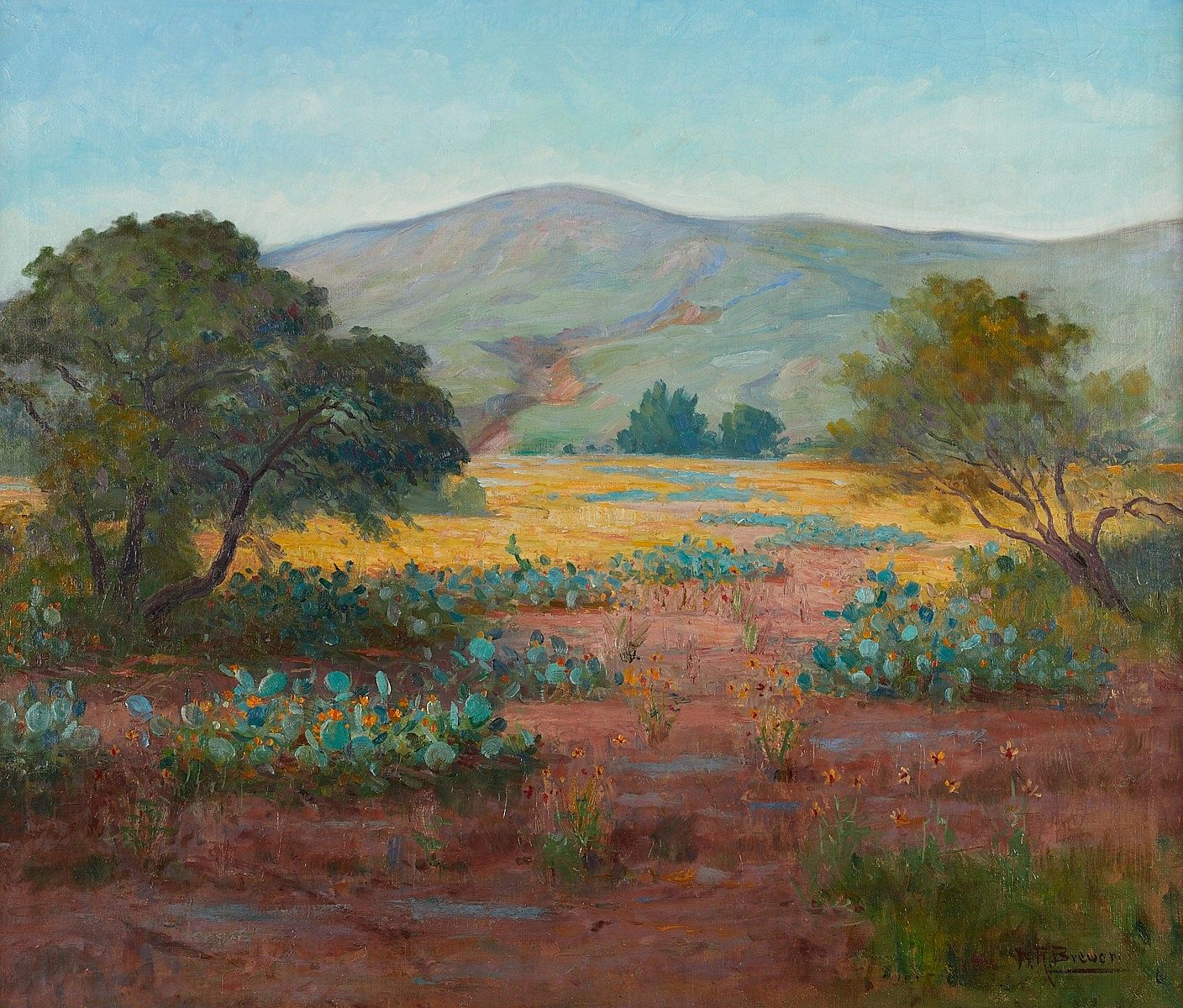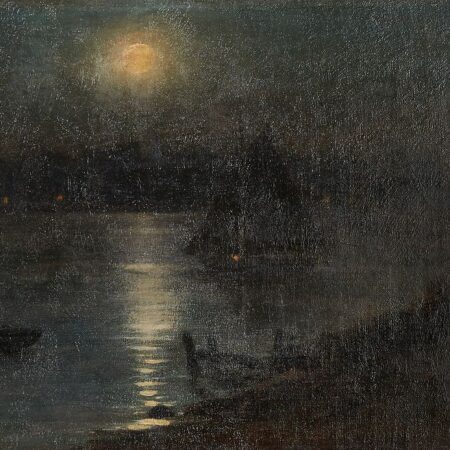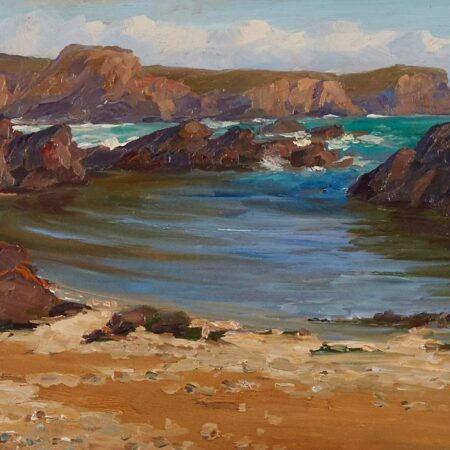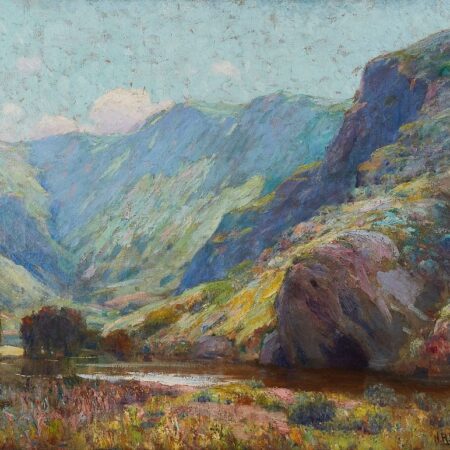
Nicholas Richard Brewer (1857-1949). Oil on canvas titled “Texas Hill Country,” depicting a lovely Texan landscape, ca. late 1920s. Signed along the lower right.
Lot Essay:
Born in a log cabin in Minnesota in 1857, Nicholas Brewer’s work typifies his frontier spirit and love for the American landscape. He grew up on a farm, where his days were defined by hard work, but he still found the time to draw and paint in between chores. At the age of 18, he moved to St. Paul. He received some art training there from Henry Koempel, a local painter and decorator, and ended up marrying Koempel’s daughter. He eked out a living for his swiftly growing family through portrait commissions and teaching.
In 1885, Brewer first traveled to New York, determined to make it as a serious artist. He received a small amount of training there; however, he remained primarily self-taught. He began receiving some success in New York, and continued spending winters there for much of his career. His work was included in several exhibitions, and he was inducted into the illustrious Salmagundi Club. In his later career, he traveled the United States, giving traveling lectures and exhibitions, as well as taking portrait commissions wherever he went. During one productive visit to Washington D.C., Brewer even painted a portrait of President Franklin Delano Roosevelt.
The main reason for his travels, though, was his love of the American landscape. Although Brewer was never able to fully make a living by landscape painting, it remained his true passion. His agrarian upbringing left him with a sense of reverence for the earth, and he delighted in experimenting with colors and textures to best capture the mood of a landscape. He paid particular heed to the flora he passed by, from the solemn Minnesota prairie grasses to southern blue bonnets to the tiny patches of scrub grass clinging to vertiginous California cliffs. His paintings rarely depict specific places; Brewer instead preferred to paint landscapes that he felt represented an ideal, more the spirit than the actuality of a location. Nevertheless, his travels provided him with a rich backdrop upon which to base his works.
Unframed: height: 34 1/4 in x width: 40 1/4 in.
Framed: height: 41 1/4 in x width: 47 1/4 in.
$1,500



